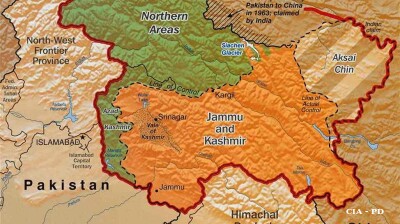South Korea, one of the world’s most export-dependent economies, is entering a turbulent period as protectionist measures from the United States intensify. The administration of President Donald Trump has widened tariffs on a vast range of goods, signalling a hardening stance on trade that could reshape supply chains and unsettle industries from consumer electronics to heavy machinery. For Seoul, which relies heavily on overseas markets to sustain growth, the challenge lies not only in weathering immediate shocks but also in confronting deeper structural weaknesses within its economy.
Korea Times reports that the country’s exports are expected to contract by around 3% in the third quarter compared to a year earlier, as the effects of US tariffs ripple across global supply chains. The Export-Import Bank of Korea projects outbound shipments to reach approximately $167bn between July and September, a downturn from the $175.2bn posted in the second quarter. The bank attributes this decline partly to fading benefits from early inventory orders and intensifying trade uncertainty sparked by US President Donald Trump’s tariff agenda.
Although Seoul and Washington recently struck an agreement that set reciprocal tariffs at 15%— lower than the initially threatened 25%— the relief may prove temporary. According to the Korea Times, a bank official noted that future shifts in the trade environment could either cushion or worsen the fall in exports, underlining the precariousness of Korea’s position.
Tariffs expand beyond steel and aluminium
According to Korea JoongAng Daily, the US Commerce Department has extended its 50% tariff scheme on steel and aluminium products to cover an additional 407 tariff codes, bringing the total number of targeted goods to more than 1,000. This expansion is set to hit not only heavy industries but also everyday consumer items such as refrigerators, cosmetics packaging and even kitchen utensils.
The Korea International Trade Association (KITA) estimates that the newly affected items represent around $11.89bn worth of Korean exports to the United States, equivalent to nearly 6% of total US imports from Korea. Particularly vulnerable are refrigerators and freezers, worth $1.6bn in annual exports, largely supplied by Samsung Electronics and LG Electronics. Cosmetics, valued at $1.3bn, and auto parts, at about $670mn, also rank among the hardest-hit categories.
While conglomerates like Samsung, LG and Hyundai operate production facilities on US soil, Korea JoongAng Daily notes that a shift toward local sourcing to bypass the 50% levies could lead to reduced orders from Korean suppliers. This presents a serious risk for the 20,000 auto parts manufacturers in Korea, who collectively employ more than 210,000 workers.
The transformer sector, closely tied to the boom in artificial intelligence and data centres, faces particular strain. Korea JoongAng Daily highlights that high-voltage transformers, priced at about $3.6mn per unit, could see tariffs climb from KRW750mn to KRW1bn each, owing to steel-content-based calculations. HD Hyundai Electric, which fulfils 60% of US demand from its Ulsan plant, and Hyosung Heavy Industries, with more than half of its new orders coming from the US, stand to lose competitiveness.
Administrative and financial burdens
Industry groups have criticised not only the financial impact but also the regulatory burden created by the expanded tariff rules. Companies must now detail the percentage of steel and aluminium content in every product and document the origin of those raw materials. Chang Sang-sik, head of trade trend analysis at KITA, told that many businesses consider this requirement “unworkable", Korea JoongAng Daily reports
To ease pressure on smaller firms, Hyundai Motor, Kia and Hana Bank have pooled KRW40bn to create a financial support scheme, Korea JoongAng Daily reports. With backing from Korea Trade Insurance, the initiative will make up to KRW630bn in preferential financing available to suppliers. Support includes lower interest rates, extended guarantee periods and reduced fees, providing a buffer for small and medium-sized enterprises facing steep US tariffs.
The semiconductor illusion
Despite trade headwinds, headline export figures have shown modest growth. From January to July, shipments rose 0.8% year-on-year to $395.5bn, with July marking a record $60.82bn, according to the Ministry of Trade, Industry and Energy. Yet, as Korea JoongAng Daily notes, this apparent resilience is a “semiconductor illusion.”
Surging demand for high bandwidth memory chips has pushed semiconductor exports to record highs, masking declines in most other industries. Excluding chips, cumulative exports through July fell 2.5% compared with last year. Ten of Korea’s fifteen major export categories recorded year-on-year drops, including machinery, down 10.8%, petrochemicals, down 10.9%, and petroleum products, down 17%.
In July alone, thirteen categories shrank, with only semiconductors, automobiles and ships managing growth. The weight of semiconductors in total exports has risen to 24.2%, up from 19.5% a year earlier, deepening reliance on a single sector at the expense of broader industrial strength.
Competitiveness eroding
Korea JoongAng Daily also points out that Korea was among just three of the world’s top ten exporters — alongside France and Germany — to record declines in exports earlier this year. Meanwhile, China and Japan posted solid growth, raising concerns about Korea’s longer-term competitiveness. Analysts argue that traditional industries have been left vulnerable to both US tariffs and China’s surge in low-cost supply.
Adding to external pressures, domestic regulatory uncertainty has clouded business sentiment. Upcoming parliamentary votes on controversial legislation, such as revisions to the Trade Union and Labour Relations Adjustment Act and amendments to the Commercial Act, are raising fears of tighter corporate restrictions. Economists warn that if such measures proceed without flexibility, they could act as further drags on an already fragile export environment.
Outlook
The Korea Development Institute forecasts overall export growth for 2025 at just 0.2%, sharply down from this year’s projected 1.2%. With pre-tariff stockpiling effects fading and global demand slowing, the margin for error is narrowing.
South Korea thus faces a dual challenge: absorbing immediate shocks from US tariff expansion while addressing deeper structural weaknesses that have left the economy overly reliant on semiconductors. As trade negotiations unfold and Washington prepares another review of tariff lists in September, Korean businesses remain caught between external headwinds and internal uncertainties.
Whether through strategic diversification, regulatory reform or targeted industry support, Korea’s ability to adapt will determine whether it can sustain its export-driven growth model in an increasingly protectionist global economy.
Features

BEYOND THE BOSPORUS: Prosecutors make move on “fictitious export schemes” of Istanbul Gold Refinery
Observers point to intra-regime gangs seizing each other’s wealth, remember Erdogan’s “Hello Fatih” phone calls and ponder whether wanted man Turgay Ciner is in London.

Taliban visit to India upsets Pakistan, signals New Delhi's changing Afghan posture
Coinciding with the visit, Pakistan conducted military operations inside Afghanistan, followed by airstrikes on multiple border towns. Retaliation against Pakistan's police training facilities and border outposts followed.

Pakistan’s India-shaped chip on the shoulder, and why a peaceful coexistence is as elusive as ever
Pakistan must first redefine how it sees India - not solely as a threat to be contained but as a neighbour with whom coexistence is unavoidable. That psychological leap has eluded generations of Pakistani leaders.

Trump shocked by China’s move on rare earths, threatens more 100% tariffs
"Some very strange things are happening in China!" Trump wrote in a post on his Truth Social account on October 10, adding "They are becoming very hostile."




